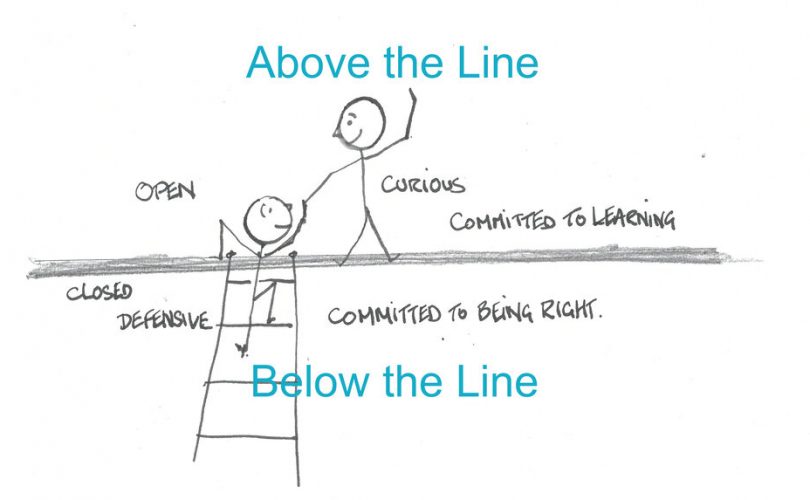Those of you who know me, know that I’m all about personal development. I work hard to improve myself, for my own good but also for the good of others. By working on myself, I’m a better husband, father, boss, friend, son, brother.
In the last few years, starting with the pandemic where I wasn’t able to travel and distract myself with life anymore, I’ve done a ton of personal development and changed my own mindset around a lot of things.
‘To give a few examples:
- I realized, around May or June 2020, that I am an introvert. I do enjoy being around small groups of people (I’ve always disliked large groups), but I need time to recharge.
- A few years ago on vacation in Alaska, I felt myself get irritable all of a sudden. I realized I was feeling anxious around what we were doing that evening (it was June of 2020, height of the pandemic).
As a big reader of books, mostly digital on my Kindle (I prefer the iPhone app over the device. The device’s UX is terrible) but also on Audible, there are three books I’ve read that introduced me to frameworks that, when tied together, have changed the trajectory of my life and my happiness.
The Upper Limit Problem
A few years ago, my business coach at the time recommended that I read a book called The Big Leap. He warned me that it’s a super potent book, but if you’re ready for it it will change your life. I’ve since spoken with quite a few successful entrepreneurs who also love this book, because it explains via entertaining narrative format something that anyone achieving a modicum of success feels – that the number one person holding us back is ourselves.
‘The “Upper Limit Problem” specifically is the idea that we are all taught from a young age to not express ourselves fully and that being too happy, too successful, too anything is bad.
“You’ll make others feel bad,” we’re told. “Stay humble,” we’re told.
What is unconsciously being communicated to us is that there is a line of happiness that we should not cross.
This is why so many people never live up to “their potential.” They never learn that they can increase their capacity for good things in their life, and the way to do that is to recognize when you’re subconsciously, yet actively, sabotaging your own happiness to bring yourself back down to the happiness level you learned when you were young.
Ever wondered why you get into a big fight with your partner right after you have a big win or get some great news?
Ever wondered why a pro athlete will go get a DUI right after they won a championship?
Now you know.
Having this pattern brought to my attention around 2018 changed me because I started recognizing when I was self-sabotaging. I realized that I had the pattern of getting mad at someone right after we had a great interaction. I sabotaged my own friendships because of my own Upper Limit Problem, because I couldn’t accept that others actually like me and always felt like they were going to abandon me (as happened a few times by friends when I was younger, especially in my teenage years. Try being the only friend in a group of 8 who wasn’t invited along on a trip, and only finding out about it when everyone was gone and you didn’t know why. Yeah.).
Above and Below The Line
My business partner in Credo introduced me to the book The 15 Commitments of Conscious Leadership: A New Paradigm for Sustainable Success back in 2019 as we were working on a new version of the company, a new product, and growing the team. I was a new dad, sleep deprived, and a bit stressed (we ran into a big cash crunch just a few months before I received this book) and therefore not showing up as my best self.
This book introduced me to the concept of “the line,” which is basically a metaphor for how you are showing up in the world and to others.
In a nutshell:
- If you are above the line, you are coming from a place of surplus, gratitude, and giving to others out of abundance.
- If you are below the line, you are showing up from a place of impoverishment. For me, when I’m below the line I am short with others, passive-aggressive, and generally defensive and acting out of my own selfish interest (which is different from self-interest, by the way).
Here is a good illustration:
Recognizing when I am below the line has been especially useful. When I recognize it (and recognition of these things is a whole different skill, one that I’ve gained through consistent meditation through the app Headspace), I then have a series of things I can do to get myself back above the line, including:
- naming 2-3 things I am grateful for in that moment
- taking a few deep cleansing box breaths of 4 seconds in through the nose, hold for 4 seconds, and 4 seconds out audibly through the mouth
- standing up and getting physical separation from the space where I went below the line. This usually just means walking to the kitchen to refill my water
- in times when I am far below the line, taking a 20-30 minute walk to cool off. I allow myself to be pissed for a few minutes, then I move into solving the problem.
Buy 15 Commitments of Conscious Leadership on Amazon
The Gap and the Gain
Finally, the book The Gap and the Gain by Dan Sullivan and Dr Benjamin Hardy was shared with me last year by the same business partner who shared the Conscious Leadership book with me (I am eternally grateful for Ali and his influence in my life).
In essence:
- The gap is when we are operating out of some perceived lack, trying to keep up with the Joneses or the Salesforces, and measuring ourselves by an external ideal
- The gain is when we are operating according to our own internal barometer, doing what we love to do out of abundance and only measuring ourselves against our past selves.
The idea is that when we’re measuring ourselves against others, there are two issues.
First, the ideal of another, which they likely arrived at by seeing someone else also, is likely not what we actually want for ourselves. Even achieving that ideal (which I’ll cover in a second why we won’t) won’t make us happy.
Second, we’re never able to fully achieve the ideal of another. The goal posts are constantly shifting because that ideal we are trying to achieve isn’t real (think about that one…) and the people we try to keep up with are always changing as well.
The only way to be happy, to operate more fully from a place of abundance and gratitude, is to recognize how we’ve grown and changed. This also frees us up to solve the problems we are meant to solve, not try to solve the problems others try to tell us we should be trying to solve instead, and to set others free to be fully them and to bring their light into the world.
Buy The Gap and The Gain on Amazon
What These Frameworks Have in Common
You may have put it together, but there is one common thread that runs through all three of these frameworks.
We all have the power to recognize these areas and choose to do one or the other.
We can choose to allow ourselves to keep sabotaging our success, or we can work to recognize when we’re doing it and stop doing it over time.
We can choose to operate below the line, or we can recognize when we’re below the line and build strategies to get ourselves back above the line.
We can choose to compare ourselves to others, or we can measure ourselves against past selves and own goals and end up much happier.
The choice is yours. Not everyone will make the choice to do this hard work, mostly because it’s a long process and the path seems foggy and we’re impatient.
Trust me though. It’s worth it.

